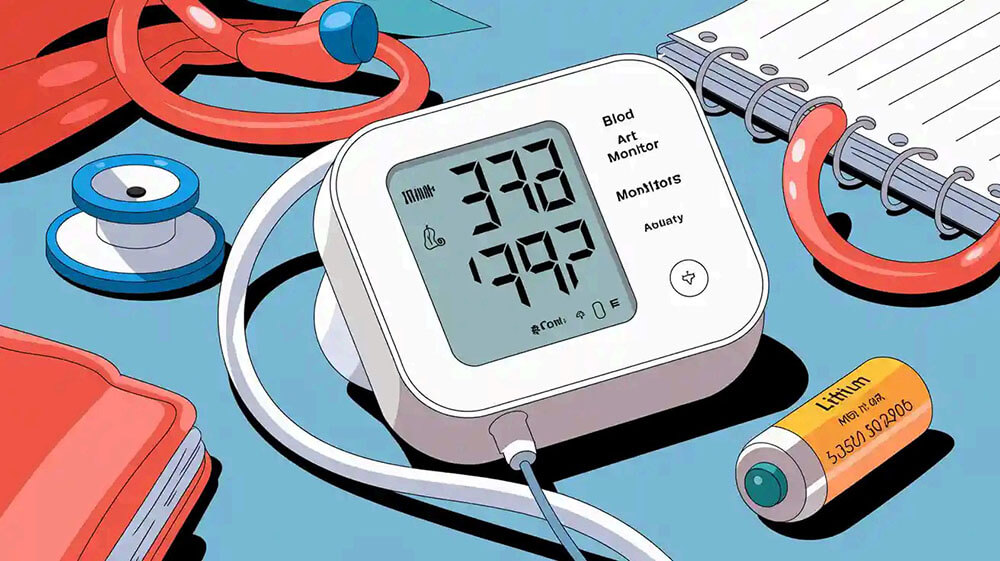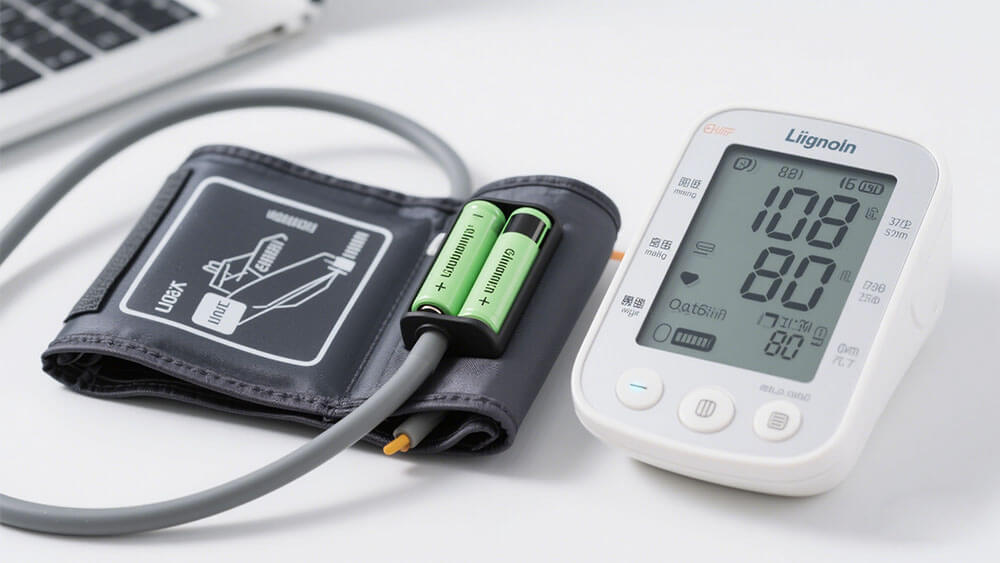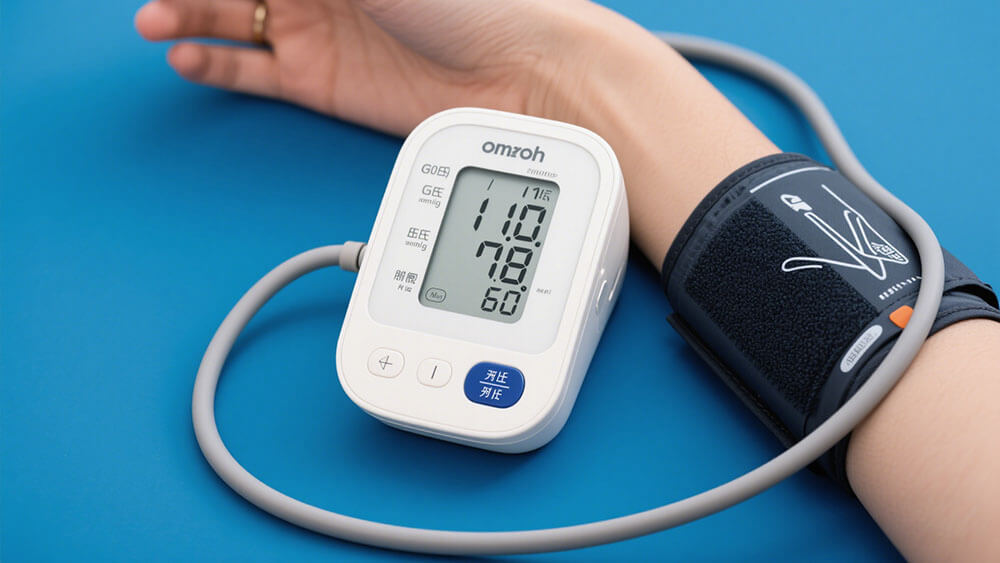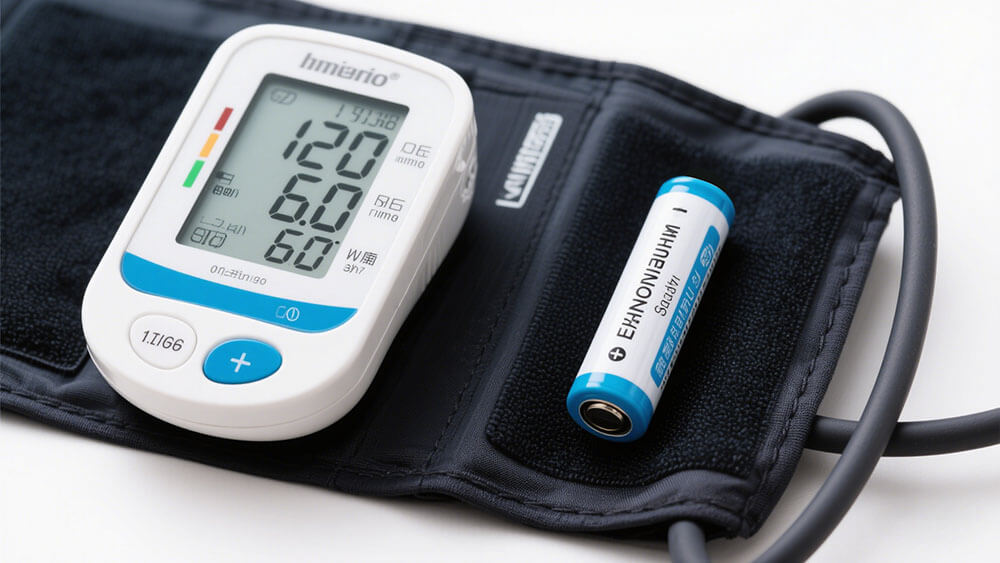Contents

Selecting a dependable blood pressure monitor lithium battery is crucial for effective health monitoring. Accuracy is a vital consideration, as research indicates that 34% of home devices yield inaccurate readings. Lithium batteries enhance performance by providing longer life cycles and sustainability advantages. These batteries meet the demands of both industrial and medical applications, ensuring seamless integration with advanced systems.
Key Takeaways
Pick a blood pressure monitor with a lithium battery. These batteries last longer and work well, up to 5000 charges. This means you won’t need to replace them often.
Make sure the monitor is accurate by checking its standards. Accurate monitors give correct readings, which is very important in medical use.
Think about how rechargeable lithium batteries help the environment. They create less waste and cut carbon emissions by about 50% compared to regular batteries.

Part 1: Key Features of Blood Pressure Monitors with Lithium Batteries
1.1 High Energy Density and Extended Battery Life
Lithium-ion batteries stand out for their high energy density, which directly impacts the performance of a blood pressure monitor. These batteries can store more energy in a compact size, ensuring extended usage without frequent recharging. For medical professionals, this feature is invaluable during long shifts or in remote areas where access to charging facilities is limited. A blood pressure monitor equipped with a lithium-ion battery ensures consistent operation, maintaining accuracy even during prolonged use. This reliability is critical in professional settings where precise readings are non-negotiable.
1.2 Rechargeable Lithium Battery Models for Sustainability
Rechargeable lithium battery models contribute significantly to sustainability efforts. Unlike disposable batteries, these models reduce waste and promote eco-friendly practices. For industries prioritizing green initiatives, such as medical and infrastructure sectors, this feature aligns with their sustainability goals. According to a report by Nature, rechargeable lithium batteries can reduce carbon emissions by up to 50% compared to traditional alkaline batteries. By choosing a blood pressure monitor with a rechargeable lithium battery, you not only enhance operational efficiency but also support global sustainability efforts.
1.3 Compact and Lightweight Designs for Industrial Portability
Portability is a key consideration for industrial applications. Blood pressure monitors with compact and lightweight designs offer unmatched convenience. These devices are easy to carry, making them ideal for professionals who frequently move between locations. The following table highlights the advantages of such designs:
Advantage | Description |
|---|---|
Portability | Compact and lightweight devices can be easily carried and used anywhere, enhancing accessibility. |
User-friendly Interface | Ergonomically designed for comfort, minimizing strain during prolonged use. |
Efficient Performance | Long-lasting battery life supports extended usage without frequent recharging. |
These features make such monitors indispensable in industrial and medical environments, where mobility and efficiency are paramount.

Part 2: Factors to Consider When Buying a Blood Pressure Monitor
2.1 Accuracy and Validation Standards for Medical Use
Accuracy is the cornerstone of any blood pressure monitor, especially in professional medical environments. To ensure accuracy, devices must meet stringent validation standards. For instance:
The mean difference between test and reference blood pressure (BP) measurements should not exceed 5 ± 8 mmHg for both systolic and diastolic readings.
Devices validated for children aged 3–12 years require a study with at least 85 subjects, while general-use devices must include a separate study with at least 35 children.
A recent study compared five automated blood pressure monitors against the ISO 81060-2:2018/AMD 1:2020 standard. Only two models (BP5450 and BP7450) met the criteria, highlighting the importance of thorough validation checks before purchasing. When buying a blood pressure monitor, prioritize models that adhere to these standards to ensure reliable readings in critical applications.
2.2 Battery Life and Charging Efficiency
Battery life and maintenance are critical for uninterrupted operation. Modern blood pressure monitors equipped with lithium-ion batteries offer extended battery life, with some models lasting up to six months on a single charge. For example, the BPM Connect model demonstrates exceptional efficiency, making it ideal for continuous use in professional settings. However, features like real-time data analysis or ECG tracking can reduce battery life by 15–30%.
When evaluating battery life and charging efficiency, consider the following:
Recharge Time: Lithium-ion batteries typically recharge faster than other types, minimizing downtime.
Usage Patterns: Devices with advanced features may require more frequent charging.
Choosing a monitor with optimized battery performance ensures seamless operation, even in demanding environments.
2.3 Compatibility with Lithium Batteries and Medical Software
Compatibility with lithium batteries and medical software is essential for professional use. Lithium-ion batteries, known for their high energy density and reliability, integrate seamlessly with advanced medical software. This combination enables features like real-time monitoring, data synchronization, and remote diagnostics.
For example, in medical applications, lithium-ion batteries support continuous operation without compromising accuracy. Ensure the blood pressure monitor you select is compatible with both the battery type and the software systems used in your facility.
2.4 Ease of Use and User Interface for Professional Settings
Ease of use is a vital factor when selecting a blood pressure monitor for professional environments. A user-friendly interface minimizes training time and reduces the risk of errors during operation. Look for devices with:
Intuitive Controls: Simplified buttons and clear instructions enhance usability.
Digital Displays: High-resolution screens improve readability, even in low-light conditions.
For professionals managing multiple patients, ease of use ensures efficiency and accuracy in daily operations.
2.5 Portability and Durability for Industrial Applications
Portability and durability are crucial for industrial and field applications. Compact designs and robust construction allow blood pressure monitors to withstand harsh conditions while remaining easy to transport. Lithium-ion batteries further enhance portability by reducing weight and providing long-lasting power.
Consider the following features for industrial use:
Lightweight Design: Facilitates mobility across different locations.
Durable Build: Ensures resistance to wear and tear in demanding environments.
These attributes make lithium-powered monitors indispensable for professionals in industrial and medical sectors.
2.6 Safety Certifications and Compliance with Industry Standards
Safety certifications guarantee the reliability and performance of blood pressure monitors. Devices powered by lithium-ion batteries must comply with standards like IEC 60601-1, which ensures electrical safety. In the U.S. and Europe, ANSI/AAMI ES 60601-1 compliance is mandatory for medical devices.
Additional certifications to look for include:
IEC 60086-4 and IEC 60086-5: Reduce battery failure malfunctions by 25%.
UL2054: Lowers safety incidents related to lithium-ion batteries by 40%.
By selecting a monitor with these certifications, you ensure compliance with industry standards and enhance operational safety.
2.7 Additional Features: Data Storage, Connectivity, and Alerts
Modern blood pressure monitors offer advanced features like memory and data tracking, connectivity, and alerts. These functionalities streamline operations and improve patient care. For instance:
Memory and Data Tracking: Enables professionals to store and review historical readings for better diagnosis.
Connectivity: Bluetooth and Wi-Fi integration allow seamless data transfer to medical software.
Alerts: Notifications for irregular readings or low battery levels enhance usability.
When evaluating additional features, Large Power consider how they align with your operational needs and the capabilities of lithium-ion batteries.

Part 3: Pros and Cons of Lithium Batteries in Blood Pressure Monitors
3.1 Advantages: Longevity, Reliability, and Sustainability
Lithium batteries offer several advantages that make them an ideal choice for powering blood pressure monitors. Their longevity ensures extended device operation, reducing the need for frequent replacements. For example, lithium-ion batteries can achieve up to 2000–5000 charge cycles, depending on the chemistry, such as LiFePO4 Lithium batteries, which outperform traditional battery types in durability. This feature is particularly beneficial for medical professionals who rely on consistent performance during long shifts or in remote locations.
Reliability is another key advantage. Lithium batteries maintain stable voltage levels throughout their discharge cycle, ensuring accurate readings from your blood pressure monitor. This stability is critical in medical applications, where precision is non-negotiable. Additionally, lithium batteries perform well under various environmental conditions, making them suitable for industrial and infrastructure applications.
Sustainability is a growing concern for many industries. Rechargeable lithium batteries contribute to eco-friendly practices by reducing waste. According to a study published by Nature, lithium-ion batteries can lower carbon emissions by up to 50% compared to disposable alkaline batteries. By choosing a digital blood pressure monitor with a lithium battery, you align with global sustainability goals.
3.2 Disadvantages: Cost and Recycling Challenges
Despite their numerous benefits, lithium batteries come with certain challenges. The initial cost of lithium-powered devices, such as a manual blood pressure monitor, is higher compared to those using alkaline batteries. This cost difference can be attributed to the advanced technology and materials used in lithium battery production. However, the long-term savings from reduced replacements and maintenance often offset the upfront investment.
Recycling lithium batteries poses another challenge. The extraction and recycling of lithium and other rare materials require specialized processes, which can be resource-intensive. According to a report by the International Energy Agency, only 5% of lithium batteries are currently recycled globally. This low recycling rate highlights the need for improved recycling infrastructure and practices. For businesses prioritizing sustainability, partnering with manufacturers that adhere to conflict-free mineral sourcing can mitigate these concerns.
3.3 Comparison with Alkaline and Other Battery Types
When comparing lithium batteries to alkaline and other battery types, the differences in performance and efficiency become evident. Alkaline batteries, commonly used in blood pressure monitors for home use, are inexpensive and widely available. However, they lack the energy density and longevity of lithium batteries. For instance, alkaline batteries typically last for 300–700 cycles, whereas lithium-ion batteries can exceed 2000 cycles.
Battery Type | Energy Density (Wh/Kg) | Cycle Life (Cycles) | Platform Voltage (V) |
|---|---|---|---|
Lithium-ion | 160–270 | 1000–2000 | 3.5–3.6 |
LiFePO4 Lithium | 100–180 | 2000–5000 | 3.2 |
Alkaline | ~100 | 300–700 | 1.5 |
Lithium batteries also outperform other chemistries like LCO and LMO in terms of energy density and cycle life. For industrial applications requiring high reliability and long operational hours, lithium batteries are the superior choice. Their ability to support advanced features, such as data storage and connectivity in modern blood pressure monitors, further enhances their appeal.
Tip: When selecting a blood pressure monitor, consider the battery type that best suits your operational needs. Lithium batteries offer unmatched performance for professional and industrial use.
Choosing a blood pressure monitor with a lithium battery demands careful consideration of accuracy, battery life, and safety certifications. These factors ensure reliable performance in professional and industrial environments. Lithium battery-powered monitors offer unmatched longevity, portability, and sustainability, making them ideal for demanding applications. Explore tailored battery solutions for your specific needs from Large Power.
FAQ
1. What makes lithium batteries ideal for blood pressure monitors?
Lithium batteries provide high energy density, extended life, and reliable performance. These features ensure automatic monitors operate efficiently, even in demanding professional environments.
2. How do automatic blood pressure monitors ensure accuracy?
Automatic monitors use advanced algorithms and sensors to deliver precise readings. They also comply with strict validation standards, ensuring reliable results for medical and industrial applications.
3. Can lithium batteries support automatic features in modern monitors?
Yes, lithium batteries power automatic functions like data storage, connectivity, and alerts. Their longevity and efficiency make them ideal for advanced features in professional settings from Large Power.





